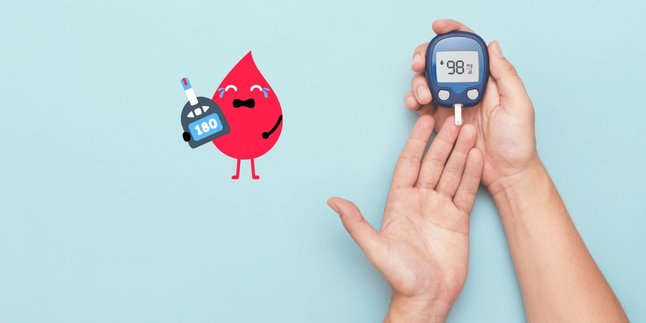Kapanlagi.com - Uric acid is often known as a cause of joint pain, especially in the feet and hands. However, did you know that this condition can also affect the head? Although often unnoticed, the presence of uric acid in the head area can cause symptoms that significantly disrupt daily activities. Without proper treatment, the impact can worsen and reduce the quality of life for those affected.
Experts explain that uric acid arises from high levels of purines in the body, which then form crystals and deposit in the joints. When these crystals form in the head or neck, symptoms such as intense headaches and pressure in the head area can occur. Unfortunately, many people mistakenly assume these symptoms are just regular migraines, often leading to delays in receiving necessary treatment.
So, what are the signs of uric acid in the head that you need to be aware of? Let’s take a look at the explanation based on various trusted medical sources.
1. Signs of Uric Acid in the Head That Need to Be Known
Uric acid in the head can cause several symptoms that resemble other medical conditions, such as migraines or tension headaches. However, there are some characteristic signs that can be early indicators:
- Intense and throbbing headache: This pain usually appears suddenly and feels like a migraine attacking one side of the head.
- Pain in the neck and shoulders: The buildup of uric acid crystals in the neck joints can cause tension and pain that radiates to the shoulders.
- Pressure sensation in the head: Patients often feel as if something is pressing inside their head, making it difficult for them to concentrate.
- Sensitivity to light and sound: Similar to migraines, patients with uric acid in the head may experience discomfort when exposed to bright light and loud noises.
- Nausea and vomiting: When the headache peaks, some patients experience nausea or even vomiting due to the intense pain.
2. Causes of Uric Acid Can Attack the Head
The main cause of uric acid is excessive purine levels in the body, which then forms crystals in the joints. Several triggering factors for high uric acid levels include:
- High purine diet: Consuming foods such as red meat, seafood, alcohol, and organ meats can increase uric acid levels in the blood.
- Obesity: Being overweight can increase uric acid production and slow down excretion through the kidneys.
- Family history: Genetic factors play a significant role in determining an individual's risk of developing gout.
- Complications of other diseases: Diabetes, hypertension, or kidney disorders can worsen gout conditions.
3. How to Diagnose Uric Acid in the Head?
Many people ignore the early symptoms of uric acid because they are considered just a regular headache. In fact, early diagnosis can help prevent more serious conditions. Here are some ways to detect uric acid in the head:
- Blood uric acid test: Laboratory tests can measure uric acid levels to determine if they are at the normal threshold.
- Imaging examination: CT scans or MRIs can help see if there is a buildup of crystals around the head and neck.
- Joint fluid analysis: If joint pain occurs along with headaches, doctors can perform joint fluid examinations to detect the presence of uric acid crystals.
4. Steps to Overcome Gout in the Head
If you have been diagnosed with gout in the head, there are several steps you can take to address it:
- Dietary changes: Reduce the consumption of foods high in purines and replace them with vegetables, whole grains, and low-fat dairy products.
- Maintain hydration: Drinking enough water helps to eliminate uric acid through urine and prevents the formation of crystals.
- Use medications: Medications such as allopurinol or colchicine can be used to lower uric acid levels, but they must be taken according to a doctor's prescription.
- Compression therapy: Warm or cold compresses can help relieve headaches caused by inflammation.
- Light exercise: Physical activities like walking or yoga can help keep the body's metabolism stable.
5. Prevention to Avoid Gout Attacking the Head
Prevention is always better than cure. Here are some steps that can be taken to prevent gout in the head:
- Avoiding high-purine foods: Reducing the consumption of red meat, alcohol, and seafood can help lower the risk of gout.
- Maintaining an ideal weight: Obesity contributes to increased uric acid levels, so maintaining a healthy weight is highly recommended.
- Regular consultations with a doctor: If there is a family history of gout, regular check-ups can help detect uric acid levels early.
6. Can gout in the head be completely cured?
Gout in the head can be managed with appropriate treatment and healthy lifestyle changes, but the risk of recurrence remains if not well-maintained.
7. How to differentiate between a regular headache and gout in the head?
Headaches caused by gout are often pulsating and accompanied by pain in the neck and shoulders. If they frequently recur without a clear trigger, it is advisable to consult a doctor.
8. What should be done during a gout attack in the head?
Immediately take the pain relief medication prescribed by the doctor, drink plenty of water, and rest in a quiet, dimly lit room.
(kpl/rmt)
Disclaimer: This translation from Bahasa Indonesia to English has been generated by Artificial Intelligence.












